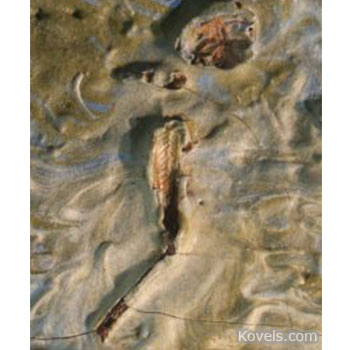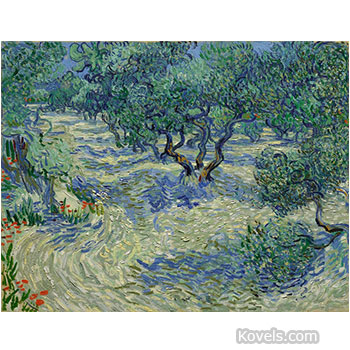While studying “Olive Trees,” an 1889 painting by Vincent van Gogh, the conservator at the Nelson-Atkins Museum in Kansas City found a tiny grasshopper stuck in the paint. Since van Gogh and others liked to work outside regardless of wind and dirt, it was not unusual to find leaves or insects that were trapped by thick, wet paint. There were no signs of struggle in the paint, which would have indicated a live insect trying to get free. And the thorax and abdomen were missing so the grasshopper did not help identify the weather conditions or season in which the work was painted. But the researchers did learn that van Gogh used a red pigment that faded. Experts are trying to decide just how much brighter the red and other colors might have been. More researchers are trying to determine how the original painting must have looked and perhaps how van Gogh planned his use of color combinations. A report of the scientific research will be published in 2019.
Photos: The Nelson-Atkins Museum of Art





Thanks for sharing this very interesting find.